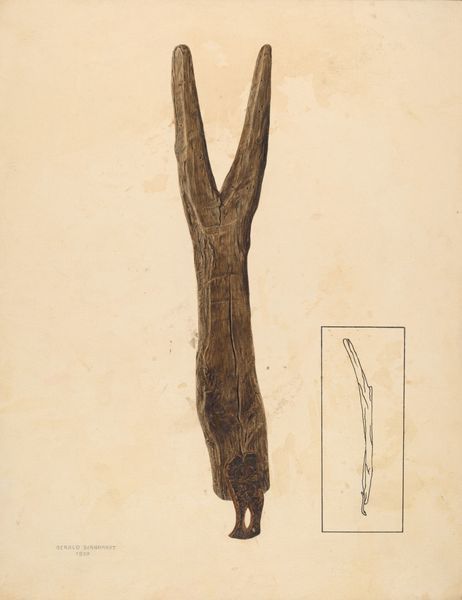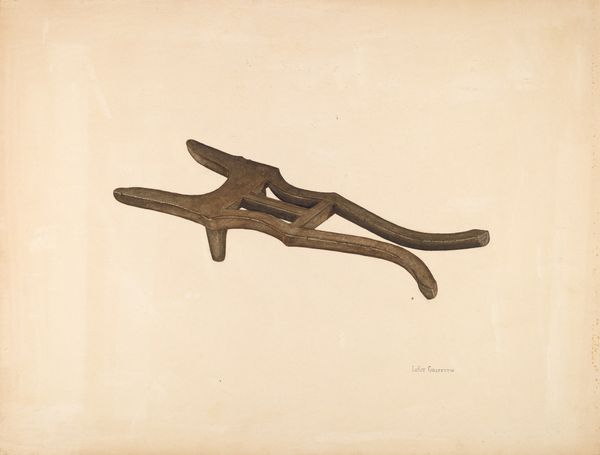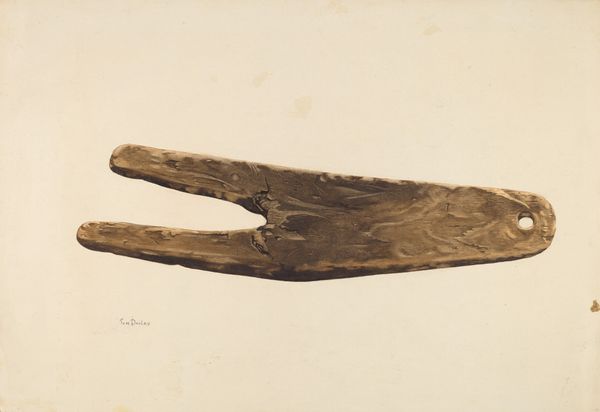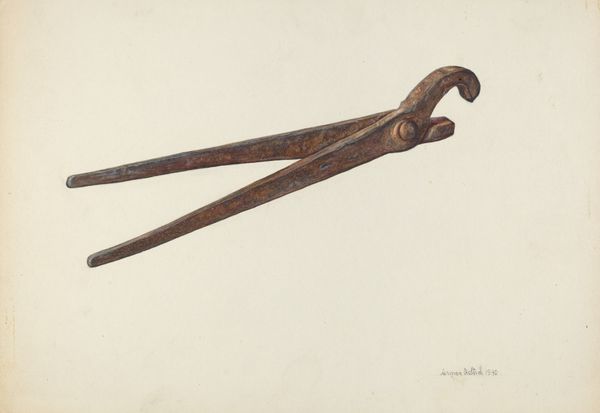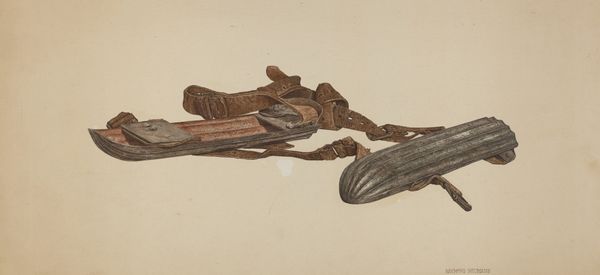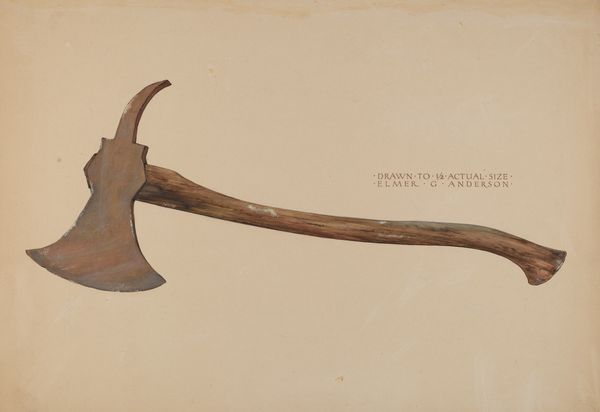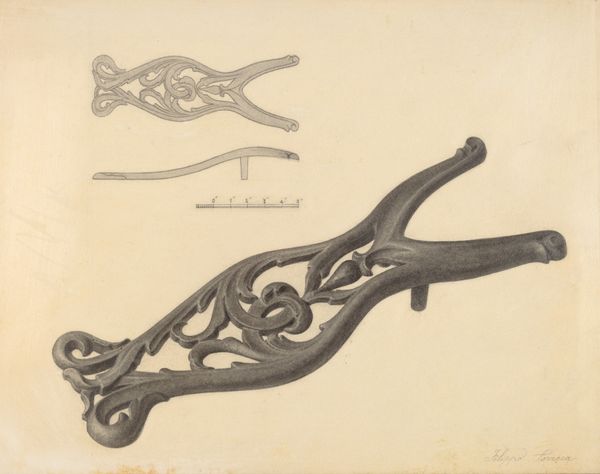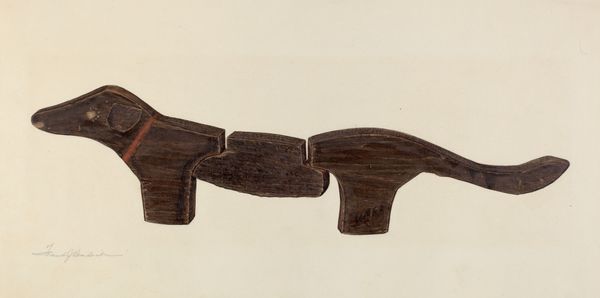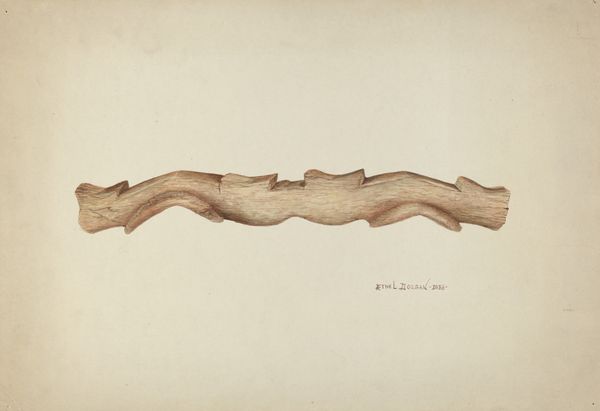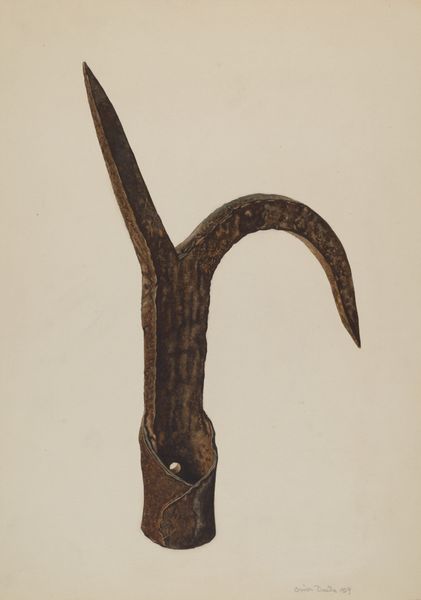
drawing, watercolor
#
drawing
#
water colours
#
watercolor
#
watercolor
#
realism
Dimensions: overall: 27.9 x 35.5 cm (11 x 14 in.) Original IAD Object: 22" long; 10 1/2" wide
Copyright: National Gallery of Art: CC0 1.0
Editor: This is Lloyd Davidson’s “Bootjack,” circa 1942, a watercolor and drawing piece. The composition, dominated by this single wooden form, feels surprisingly...monumental, almost architectural, even though it is a common object. How do you interpret this work, especially considering the time it was made? Curator: Davidson’s focus on the ordinary is fascinating, particularly against the backdrop of 1942. We’re in the thick of World War II, a time of global upheaval, yet here’s a bootjack rendered with almost scientific precision. It's quiet, almost defiant, in its domesticity. What does it mean to focus on these small, everyday moments when the world is in chaos? Perhaps it is an intimate look at themes of resilience and survival through quiet, unsung labor. Editor: So, it’s a form of resistance? A statement about finding solace or even strength in the everyday during wartime? Curator: Potentially, yes. Think about who would have used this bootjack, their gender, class, background – and what taking off one's boots represented at the end of the day: the conclusion of manual labor. It acknowledges a lived reality of so many. In rendering the bootjack with such meticulous detail, Davidson elevates its status. Editor: I hadn't considered that the bootjack itself represents so much. It almost feels like Davidson is immortalizing it. And I notice there's even a technical drawing of it, like an engineer’s plans. Curator: Precisely! And consider the function of art as a historical artifact, its role in archiving details for future understanding. By elevating an everyday object, it reflects questions about labor, identity, and domesticity. Editor: I’m beginning to appreciate how a simple image of a bootjack opens into larger conversations about art's role in reflecting, archiving, and indeed, challenging prevailing norms. Curator: Exactly. It’s through such nuanced observations that we enrich our understanding of both art and its historical footprint.
Comments
No comments
Be the first to comment and join the conversation on the ultimate creative platform.

